The Trump administration has forbidden federal employees to write or utter the words “climate change” and is deep-sixing federal research about how humans are increasing the planet’s average temperature. “The concept of global warming,” Mr. Trump has proclaimed, “was created by and for the Chinese in order to make U.S. manufacturing non-competitive.”
Fish are defending the Chinese.
Atlantic Salmon Restoration Fizzles Out
Consider the demise of Atlantic salmon in the U.S. When I went to work for the Massachusetts Division of Fisheries and Wildlife in 1970 restoring the species to the 407-mile-long Connecticut River that drains Vermont, New Hampshire, Massachusetts and Connecticut was our main priority. Over the next four decades the four states, power companies and feds would spend hundreds of millions of dollars on fish ladders, fish lifts and salmon hatcheries.
The Connecticut had been by far the continent’s most prolific Atlantic salmon river, supporting at least 25 strains of salmon, each uniquely adapted to its tributary. But by the early 19th century dams had ushered all into oblivion.
So the drill was to create a new native by high-speed evolution. We obtained eyed eggs from other salmon rivers, mainly the Penobscot because it was closest and its fish most similar to the Connecticut’s extinct races. Only a few of the smolts and fry we stocked returned as adults, but they’d been honed by fierce natural selection. Returning fish were stripped, and each new generation of juveniles produced still-better-adapted fish. Only a tiny percentage of fry made it to smoltification, but because they were less domesticated by hatchery life, because so many could be stocked and because their fins were in better shape, they yielded better results for the dollar than hatchery-raised smolts. By 1980, with a well-adapted broodstock, 529 adults returned. Partners and public celebrated what looked like certain success.
Then everything went to hell. By 2012 the run had dwindled to 54, and the Fish and Wildlife Service cancelled funding. It pulled the plug on similar restoration on the Merrimack River, which drains New Hampshire and Massachusetts.
Atlantic salmon have hung on in Maine, though barely; they’re now listed as endangered, and you can’t fish for them. In 1977 Jack Swedberg of Millbury, Massachusetts caught 10 salmon in one week on the Machias River. The most recent redd count (October 2016) indicated 14 returning fish for the entire river. Redd counts on the East Machias indicated 12 fish, and single numbers on four other Downeast rivers. One bright spot is the Penobscot on which a recent $64 million reconnection project has made 2,000 additional miles of habitat available to diadromous fish. At this writing the Maine Department of Marine Resources reports Penobscot trap counts at 888.
Climate Change the Main Suspect
Connecticut’s supervising fisheries biologist Steve Gephard sees little hope for Atlantic salmon in the U.S. “We’ve terminated the [Connecticut River] program, but we’re stocking 200,000 to 250,000 fry in selected portions of the Farmington and Salmon Rivers just to maintain the broodstock,” he says. “In my mind a major factor has been climate change. We’re at the southern extent of the range. Things are happening so quickly in New England. Even in Maine, where we’re investing a lot of resources, salmon are struggling. Returns to the Downeast rivers are abysmal. Long Island Sound is getting warmer every year. Maine has the cold Gulf of Maine and quicker access to the ocean and Greenland. Our fish have to come around Cape Cod. This isn’t easy for me to talk about because I’ve put my career into it.”
Wild and hatchery smolts and parr do fine everywhere they still exist in New England freshwater. When they hit the salt they seem to fall into a black hole. One theory is that ocean habitat in the North Atlantic is getting too cold. How could that happen with global warming? Melting ice.
The Flight North
Climate change isn’t the only threat to Atlantic salmon. Others include high-seas fisheries, acid rain and salmonid aquaculture. So the northern retreat of other fish provides a more airtight rebuttal to climate-change deniers. Two-thirds of marine species in the Northeast United States, including such fish as Atlantic mackerel, porgies, summer flounder, yellowtail flounder, black sea bass, sea herring, monkfish and tilefish are fleeing north to escape a warming ocean.

And southern fish are finding new habitat to the north. Jack crevalle, cobia, flying fish, mahi and king mackerel are increasingly seen in southern New England. Blue runners are everywhere. Tarpon are reported at Montauk, New York. In August 2013 a sailfish was taken in the Cape Cod Canal.
Gray snapper, associated with the tropics, are being caught in Delaware Bay. Off the Delaware coast southern species like triggerfish, spadefish, pompano and shrimp are showing up. Surf clams, managed as a mid-Atlantic stock, are now mostly off New England. Lobsters are dying off in Long Island Sound. Now they’re centered in Maine.
“Warming ocean temperatures may have the most wide-ranging effects on fishery resources in the Gulf of Mexico,” reports the National Marine Fisheries Service. “Recent surveys of seagrass bed assemblages in the northern Gulf of Mexico that were replicated and compared with those from the 1970s revealed numerous tropical or subtropical species that were absent from surveys in the 1970s. Snappers, groupers, butterflyfish, wrasses, and parrotfish appear to have shifted their ranges and are contributing to the tropicalization of northern Gulf of Mexico seagrass fish assemblages.”
Manager Laments
The big run of bluefin tuna off New York traditionally happened in late October. Now it happens in mid-December. One day last winter my friend John McMurray, one of the most successful light-tackle tuna guides on the East Coast, found the fish only six miles out. But he lamented to me as follows: “The windows get worse and worse until finally water starts freezing around your boat.”

Delaware Bay used to be famous for summer flounder and black sea bass, but these fish are much diminished, having moved north. McMurray, who also serves on the Mid-Atlantic Fishery Management Council, offers this: “We have quotas based on what the stock used to look like. With summer flounder the base year was 1998. So you have these outdated quotas that don’t account for redistribution of fish. Summer flounder used to be concentrated off New Jersey; now they’re off Connecticut and New York. So some states are overfishing their outdated quotas. You can’t go by anecdotal information. You have to have science, and the only way you get that is to trash the state-by-state management quotas and go to a coast-wide quota for one or two years so you get another baseline. But the politics won’t let you do that. New Jersey, for instance, doesn’t want to give up its quota. Black sea bass are now in Maine big time. The Mid-Atlantic Council manages that stock; and now Maine wants joint management. We don’t want New England states managing black sea bass because they’ve messed up everything else they’ve managed.”
Commercial fishermen in North Carolina have a hard time finding black sea bass now, so they’re having to cruise ten hours north.
“Warm, saline water coming over the shelf in the winter is the single biggest factor in survival of young-of-the-year black sea bass,” declares Charles Witek, fisheries activist/writer and former member of the Mid-Atlantic Fishery Management Council. “The 2011 year class was huge. It just blows away everything that went before or since. Black sea bass are probably the best example of what’s going on.”
Warmer water is linked to poorer cod recruitment and body size. Copepods, which cod feed on when they’re young, bloom earlier now; so they’re not as available to juvenile cod.

Researchers reporting in the November 13, 2015 issue of Science used satellite data to track daily surface temperatures in the Gulf of Maine. From 2004 to 2012 they found a temperature increase seven times mean global rate. But in setting cod catch quotas the New England Fishery Management Council ignored this heat wave. Largely as a result Gulf of Maine cod were fished at five times sustainable level and their abundance dropped to five percent of biomass target. On Georges Bank cod abundance dropped to one percent of biomass target while fishing continued at ten times sustainable level.
Other Ominous Signs
“Because of the Clean Water Act [endangered] Atlantic sturgeon have been doing better in Delaware and Chesapeake Bays,” reports Danielle Kreeger, science director for the Partnership for the Delaware Estuary. “But in the last five or ten years we’ve seen some regression in the Chesapeake. Early spring warmups add nutrients to the water column. The bay gets algal blooms and a drop in oxygen right at the time young sturgeon need it most.”
Menhaden, frequently called “the most important fish in the sea” because they sustain so many predators, are currently on the rebound because of reduced quotas. But their long-term future doesn’t look bright. Larvae mature in tidal creeks and marshes, and this nursery habitat is vanishing as sea level rises. Because menhaden are filter feeders they maintain near-shore water quality, but climate change threatens to limit this service, too.
I’ll close with this online warning from the National Marine Fisheries Service posted shortly before Trump took office and which has so far eluded White House censors: “Changing climate and oceans are affecting the nation’s valuable living marine resources and the people, businesses and communities that depend on them. From warming oceans and rising seas, to droughts and ocean acidification, these impacts are expected to increase with continued changes in the planet’s climate system. There is much at risk. Marine and coastal fisheries support over $200 billion in economic activity and 1.8 million jobs in the U.S. each year. Coastal habitats help defend coastal communities from storms and inundation, and provide the foundation for tourism and recreation-based economies in many coastal communities.”





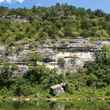

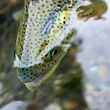
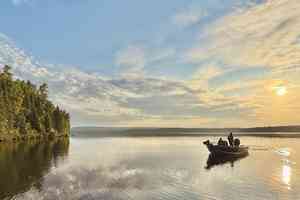




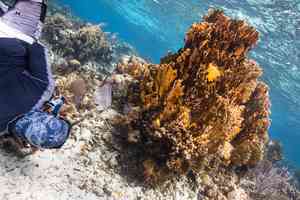

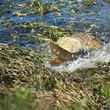




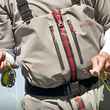
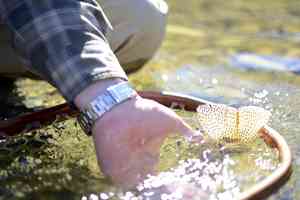



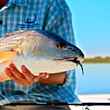
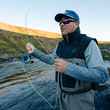


Comments
Pratt replied on Permalink
The only thing that doesn't make sense is the article talks about cooling water temperatures from melting ice, but then the rest is about rising water temperatures?
Erin replied on Permalink
This article is so full of solid information, but the interjection of opinionated statements diminishes its overall value. As is stated in the article, "you have to have science," because no matter how much we would like it to, emotional attachment to recreation and aquatic resources isn't going to change anything by itself. I think there are better ways to pull at our heartstrings and make readers understand the immensity of this issue - I especially found value in pointing out that entire careers have been dedicated to species management and conservation causes, as well as the economic consequences of these thwarted attempts. But including a quote that says New England has “messed up everything else they’ve managed” is counterproductive to the cause. If the solution lies in coast-wide cooperation, why throw a jab at an area that needs to be included? Through your work with Fish and Wildlife, I’m certain you have the expertise necessary to educate the public and are well aware of the data collection and scientific efforts put into decision-making. And that is where the power lies: the proof is in the pudding. Sharing these findings in a manner the public is capable of grasping is imperative at times like this where so much doubt is injected into media outlets and anyone can say anything they want on social media without any basis in truth. As soon as an article starts to read more like a rant than an educational or scientific piece, it begins to lose credibility. Yelling and pointing fingers are actions characteristic of children and Trump. Poise, tact, and diplomacy need to be employed to keep the conversation on target and prevent it from being derailed by deniers who spew ignorance fueled by irrational thoughts and argumentative opinions. I thought it was good that the closing statement brought the article back to the main focus of climate change, but it is missing the “call to action” for the readers. For instance, this is the doom and gloom upon us because of inaction on the climate front… but this is what you can do to mitigate the impacts, to make strides forward, etc. If you stick to the facts, focus on direct, tangible impacts to the public, and give them a way they feel like they can get involved or make a difference, I think articles like this will be much more impactful and well-received.
Pages